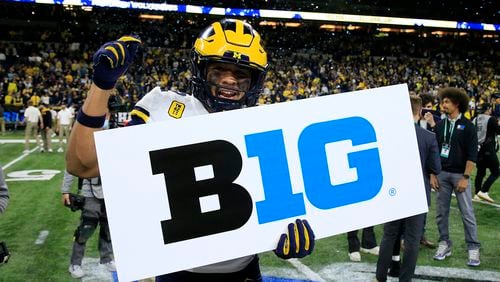Pete Thamel of ESPN reports the College Football Playoff’s board of managers raised a salient question: Since nobody really runs college football, should the CFP nominate itself? Thamel’s sources told him the conversation, conducted via Zoom this week, didn’t run beyond five minutes. You’d have to think changing the world would require at least 10.
That said, it’s inevitable that the issue won’t be revisited in a full and frank manner. College football, the sport that matters most at most institutions of higher learning, has gotten to a place where even the highest of the mighty are asking, “Who’s in charge here?”
The answer: nobody. Any volunteers?
Remember the SEC, where It Just Means More, no longer is first among equals when it comes to TV money. (In college football, everything comes down to TV money.) The Big Ten, spreading its wings to enfold Tinseltown into the Rust Belt, just signed a deal that will run for seven years and bring the Big Ten more than $1 billion per annum. That’s March Madness money.
In a show of haughtiness that would make even the SEC blush, the Big Ten reached agreement with three rightsholders – CBS, Fox and NBC. Not included is ESPN, the former Worldwide Leader.
The Wall Street Journal puts the SEC’s new TV deal, which begins in 2024, at around $800 million per year. (New slogan: We Just Earn Less.) At SEC Media Days, commissioner Greg Sankey said, “This is a superconference.” So’s the Big Ten. That makes two. But the Pac-12 and Big 12, each losing marquee programs, don’t really factor, and the ACC, a distant third in TV revenue – $397M, again per the WSJ – is stepping lightly.
It’s unclear if any governing body could drag this sport into plumb. Also unclear is whether the Big Ten and SEC would be willing to compromise to accommodate the lesser leagues. At this moment, which seems more apt to happen: The Power 5 agreeing to let someone work for the betterment of all, or the Big Ten and SEC saying, “We’re expanding the playoff to 16 teams, and all 16 will come from our two leagues”?
The NCAA – note how long it took us to get around to that wheezing entity – has its transfer portal, which allows anyone to go anywhere at any time. Remember Chase Brice of Grayson High School? As a freshman, he saved Clemson’s season when Trevor Lawrence got hurt. As a grad transfer, he started for Duke. He’s now at Appalachian State. Remember JT Daniels, who started for USC and Georgia? He’s at West Virginia. Enter the portal and see the world.
Remember Stetson Bennett, the quarterback nobody except Kirby Smart wanted? He’s a sixth-year senior. He’s probably a millionaire. When it comes to above-the-table money, NIL is far from “nil.”
Various states have enacted NIL laws, which allow college athletes to be paid the going rate for their names/images/likenesses. These laws allow boosters to do what they’ve done all along, only there’s nobody to say, “That’s a violation.” Athletes have real money and real freedom. That’s great for them. It mightn’t be for the sport.
Myles Brennan just announced his retirement as LSU’s quarterback, prompting folks to ask: What about his NIL money? He had signed with five sponsors, Smoothie King, GameCoin and a Ford dealership included. Answer: He just might keep it. NIL money isn’t supposed to be performance-based.
A governing body could help, but this assumes the conferences and their members agree to be governed. The reason the Power 5 also are known as the autonomous five is that they’ve decreed some decisions can be made only by the powerful. FCS schools already have a 24-team playoff. The Group of 5 – the non-Power-5 FBS schools – never believe their more-favored brethren care one whit for them. (They’re right. They don’t.)
One of the mysteries of our time is why the NCAA mostly left big-time football alone. It allowed the bowl system to sort itself out, which never quite happened. Bear Bryant picked wherever he wanted to spend the New Year, and everyone else fell in line. The idea for a conference championship game came from the SEC’s Roy Kramer. The NCAA has nothing to do with the CFP, which is why the CFP is thinking self-government might be the way to go.
To borrow from Elvis Costello: “I used to be disgusted. Now I try to be amused.” That’s my stance. Railing at college football has had little effect. The big get bigger. The rich get richer. Nobody is running the thing, except maybe NIL agents, who didn’t exist 13 months ago. It’s fun to watch, sort of. It’s also frightening. When the crash comes, who’ll be left standing?







